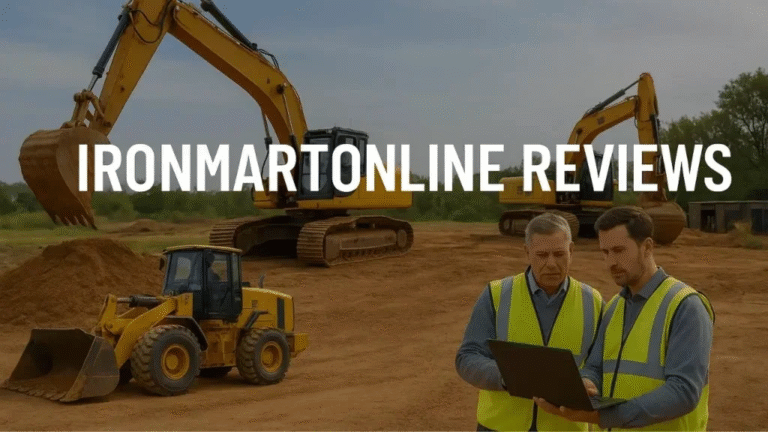
Workplace productivity impacts everything from employee satisfaction to business success, yet many struggle to create environments for peak performance. This guide explores key strategies to boost productivity, including optimizing work environments, mastering time management, leveraging technology, and prioritizing well-being. With these evidence-based tips, small changes can lead to big improvements in individual and team performance.
Optimizing the Work Environment
Your physical workspace plays a crucial role in determining productivity levels. The environment around you directly impacts focus, creativity, and overall job satisfaction.
Creating a Comfortable Workspace
A well-designed workspace serves as the foundation for productive work. Start by evaluating your current setup and identifying areas for improvement.
Ergonomic Essentials
Proper ergonomics reduces physical strain and prevents long-term health issues. Ensure your monitor sits at eye level to avoid neck strain. Your feet should rest flat on the floor, with your knees at roughly 90 degrees.
Investing in quality office furniture, like that available in Las Vegas, makes a substantial difference. An ergonomic chair that supports your lower back can prevent fatigue and discomfort during long work sessions. Similarly, a desk at the appropriate height allows your arms to rest comfortably while typing.
Noise Management
Excessive noise ranks among the top productivity killers in modern workplaces. Open office environments can be particularly challenging, with conversations and phone calls creating constant distractions.
Consider noise-canceling headphones for individual work sessions. For shared spaces, establish quiet zones or designated areas for phone calls. Some organizations have found success with white noise machines or soft background music to mask distracting sounds.
Temperature Control
Studies indicate that office temperatures between 68-72°F (20-22°C) optimize productivity. When employees feel too hot or cold, they spend mental energy on physical discomfort rather than focusing on their tasks.
The Role of Natural Light and Plants
Natural elements in the workplace provide surprising productivity benefits that extend beyond mere aesthetics.
Maximizing Natural Light
Natural light regulates circadian rhythms and improves mood, leading to better focus and reduced eye strain. Position workstations near windows when possible, and use light-colored walls and surfaces to reflect natural light throughout the space.
For spaces with limited natural light, consider full-spectrum LED bulbs that mimic sunlight. These can help maintain energy levels and alertness throughout the day.
Incorporating Plants
Adding plants to your workspace isn’t just decorative—it’s functional. Research from the University of Exeter found that employees in offices with plants showed 15% higher productivity compared to those in sparse environments.
Plants improve air quality by filtering toxins and increasing oxygen levels. They also provide psychological benefits, reducing stress and creating a more pleasant work atmosphere. Low-maintenance options like snake plants, pothos, or ZZ plants work well in office settings.
Time Management Techniques
Effective time management transforms how you approach daily tasks and long-term projects. These proven techniques help you work smarter, not harder.
Pomodoro Technique
The Pomodoro Technique divides work into focused intervals, followed by brief breaks. This method helps combat mental fatigue and maintain high concentration levels throughout the day.
How It Works
- Choose a specific task to focus on
- Set a timer for 25 minutes
- Work on the task with complete focus until the timer rings
- Take a 5-minute break
- Repeat the cycle, taking a longer 15-30 minute break every four cycles
Benefits and Applications
This technique works particularly well for tasks requiring deep concentration, such as writing, coding, or detailed analysis. The time constraint creates urgency, while regular breaks prevent burnout.
Many professionals find the Pomodoro Technique helpful for overcoming procrastination. Starting with just 25 minutes feels manageable, even for intimidating projects. Once you begin, momentum often carries you forward.
Customization Tips
While 25 minutes works for many people, you can adjust the intervals based on your attention span and task requirements. Some prefer 45-minute work sessions with 10-minute breaks, while others find 15-minute intervals more effective for highly challenging tasks.
Prioritizing Tasks Using the Eisenhower Matrix
The Eisenhower Matrix, also known as the Urgent-Important Matrix, helps you categorize tasks based on their urgency and importance. This framework prevents you from spending too much time on low-value activities.
The Four Quadrants
- Quadrant 1 (Urgent and Important): Crises, deadline-driven projects
- Quadrant 2 (Important but Not Urgent): Strategic planning, skill development, relationship building
- Quadrant 3 (Urgent but Not Important): Interruptions, some emails, non-essential meetings
- Quadrant 4 (Neither Urgent nor Important): Time wasters, excessive social media, irrelevant activities
Strategic Application
Most productive professionals spend the majority of their time in Quadrant 2. These activities drive long-term success but often get overshadowed by urgent but less important tasks.
Start each day by identifying your Quadrant 2 activities and scheduling dedicated time for them. This proactive approach prevents many Quadrant 1 crises from occurring in the first place.
For Quadrant 3 tasks, look for delegation opportunities or ways to streamline processes. Quadrant 4 activities should be eliminated or minimized as much as possible.
Technology and Tools
Modern technology offers powerful solutions for boosting productivity, but success depends on choosing the right tools and implementing them effectively.
Project Management Software
Project management platforms centralize information, streamline communication, and provide visibility into project progress. The right software can eliminate confusion and reduce the time spent on administrative tasks.
Implementation Best Practices
Choose a platform that matches your team’s workflow rather than forcing your processes to fit the software. Start with basic features and gradually add complexity as your team becomes comfortable with the system.
Establish clear naming conventions and folder structures from the beginning. This prevents confusion and makes it easier to find information as projects grow in complexity.
Regular training sessions help team members maximize the software’s potential. Many productivity gains are lost when users only utilize the basic features of sophisticated tools.
Automation Tools
Automation eliminates repetitive tasks and reduces human error, freeing up time for higher-value activities.
Common Automation Opportunities
- Email Management: Use filters and rules to automatically sort incoming messages
- Social Media Scheduling: This allows you to schedule posts in advance
- Data Entry: Connects different applications and automates data transfer between them
- Report Generation: Most analytics platforms offer automated reporting features
Getting Started with Automation
Begin by identifying tasks you perform regularly that follow the same steps each time. These repetitive processes are ideal candidates for automation.
Start small with simple automations before tackling complex workflows. Success with basic automation builds confidence and demonstrates value to stakeholders who might be hesitant about change.
Document your automated processes so team members understand how they work and can troubleshoot issues when they arise.
Employee Well-being
Productivity isn’t just about working harder—it’s about creating conditions that allow people to perform at their best consistently.
Encouraging Breaks and Mindfulness
Regular breaks might seem counterproductive, but they enhance overall performance by preventing mental fatigue and maintaining creativity.
The Science of Breaks
Experts found that the most productive employees work for 52 minutes and then take 17-minute breaks. These high performers understand that sustained focus requires regular recovery periods.
Different types of breaks serve different purposes. Short micro-breaks (1-2 minutes) help reset attention, while longer breaks (15-30 minutes) allow for deeper mental recovery.
Mindfulness Practices
Mindfulness meditation reduces stress and improves focus. Even brief mindfulness exercises can have immediate benefits for productivity and well-being.
Simple techniques include:
- Deep breathing exercises during transitions between tasks
- Brief walking meditation during lunch breaks
- Mindful eating to improve energy levels and satisfaction
Many organizations now offer mindfulness training or meditation apps as employee benefits, recognizing their impact on performance and job satisfaction.
Promoting Work-Life Balance
True productivity extends beyond office hours. Employees who maintain a healthy work-life balance demonstrate higher creativity, better decision-making, and increased longevity in their roles.
Flexible Work Arrangements
Remote work and flexible scheduling options can significantly boost productivity when implemented thoughtfully. Many employees report higher focus levels when working from home, citing fewer interruptions and reduced commute stress.
However, flexibility requires clear boundaries and communication protocols. Establish core hours when team members are available for collaboration, while allowing individual flexibility for deep work sessions.
Setting Boundaries
Encourage employees to disconnect from work communications after hours. Constant connectivity leads to burnout and reduces overall productivity.
Create cultures where taking vacation time is celebrated rather than discouraged. Well-rested employees return with fresh perspectives and renewed energy.
Mental Health Support
Organizations that prioritize mental health see measurable improvements in productivity metrics. This includes offering employee assistance programs, mental health days, and creating psychologically safe environments where people feel comfortable seeking help.
Building a Sustainable Productivity System
Creating lasting productivity improvements requires more than implementing individual techniques—it demands a comprehensive approach that addresses systems, habits, and culture.
Start with Assessment
Before implementing changes, evaluate your current productivity levels and identify specific areas for improvement. Use time-tracking tools to understand how you currently spend your time, then compare this against your priorities and goals.
Gradual Implementation
Avoid the temptation to overhaul everything at once. Choose one or two techniques from this guide and implement them consistently for several weeks before adding new elements. This approach increases the likelihood of long-term success.
Measure and Adjust
Productivity improvements should be measurable. Track relevant metrics such as task completion rates, project timelines, or employee satisfaction scores. Use this data to refine your approach and identify what works best for your specific situation.
Future Trends
Artificial intelligence and machine learning will increasingly support productivity efforts through predictive analytics and personalized recommendations. Virtual and augmented reality technologies may transform how we interact with information and collaborate with remote team members.
Conclusion
Productivity evolves with technology and work culture, but remains focused on using resources efficiently to achieve goals. By applying the strategies in this guide and staying updated on trends, you can boost your effectiveness and accomplish more in less time. Regularly assess and adapt your methods to maintain success and growth. Keep learning and improving to achieve optimal productivity. Move forward confidently with the tools and knowledge to succeed.


